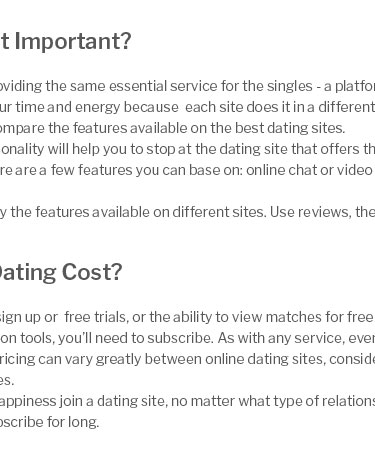marriage and affairs: choices, boundaries, consequencesUnderstanding motivations and contextAttraction outside a commitment can arise from unmet needs, curiosity, avoidance of conflict, or the thrill of novelty. Naming what is happening reduces confusion and opens space for ethical choices. Common patterns- Loneliness within the relationship despite frequent contact.
- Unresolved grievances that resurface as distance or secrecy.
- Identity shifts: career changes, parenting transitions, or evolving values.
- Opportunity combined with low boundaries around messaging and social media.
Myths versus realities- Myth: Affairs only happen in “bad” marriages. Reality: They can occur in caring relationships with neglected repair.
- Myth: Passion replaces partnership needs. Reality: Infatuation rarely covers logistics, safety, and trust.
- Myth: Total secrecy protects everyone. Reality: Secrets shift power, increase anxiety, and complicate consent.
Clarity beats ambiguity. Options when desire and commitment collideYou can choose secrecy, openness, recommitment, or exit. Each path has distinct costs, benefits, and skills required. Option A: Recommit and repair- Pause outside entanglements to stabilize emotions.
- Map needs and boundaries-emotional, sexual, digital, financial.
- Restore transparency: phones, messages, and spending require mutually agreed visibility.
- Practice structured dialogues and rebuild intimacy through consistent, low-stakes care.
Option B: Negotiated non‑monogamy- Explicit agreements about safer intimacy, disclosure, frequency, and veto power.
- Calendar-neutral check‑ins anchored to milestones rather than crisis.
- Separate NRE (new relationship energy) management: limit intensity to protect existing commitments.
- Exit clauses: how either partner can pause or end the agreement.
Option C: Separation or relational transition- Compassionate uncoupling with shared norms for communication and social circles.
- Financial and cohabitation plans that match the new structure.
- Clear dating boundaries to prevent triangulation.
Secrecy is a strategy, not a solution. Ethical decision checklist- Have I named what I want without blaming anyone?
- Have I assessed risks to health, finances, and dependents?
- Do my actions allow informed consent for those impacted?
- Can I maintain my values if the situation is public?
- What support system keeps me accountable and grounded?
Comparing popular paths at a glance- Secrecy‑based affair: High intensity and autonomy; elevated risk to trust, logistics, and wellbeing.
- Monogamous recommitment: Stability and depth; requires patience, skill‑building, and consistent repair.
- Open relationship: Variety and honesty; demands strong boundaries, time management, and emotional regulation.
- Solo dating after a clean breakup: Freedom and clarity; slower attachment and deliberate pacing recommended. For location‑specific options, some explore casual dating san francisco to meet new people with transparent expectations.
Digital boundaries and discoveryPhones, private chats, and apps can blur lines fast. Decide what counts as flirting, what gets shared, and what is off‑limits. If using platforms like tinder nowra, align on profiles, messaging norms, and what you both disclose about relationship status. Communication frameworks that reduce harmBefore you disclose- Prepare a concise narrative that owns choices without over‑explaining.
- Anticipate impact; arrange calm space and support afterward.
- Commit to answering reasonable questions, and name what you cannot answer yet.
During hard conversations- Use “I” statements, reflect feelings, and avoid counter‑accusations.
- Set a pause word to prevent flooding and disengage respectfully.
- Capture agreements in writing so memory doesn’t distort them.
Aftercare and stabilization- Schedule follow‑ups with specific topics: safety, boundaries, logistics, intimacy.
- Reduce variables: fewer venues, fewer observers, fewer assumptions.
- Rebuild daily goodwill via small dependable actions and appreciation.
Repair is repetitive, not dramatic. Red flags and green lights- Red flags: Gaslighting, financial secrecy, STI risk denial, threats, social isolation.
- Green lights: Owning choices, consistent transparency, mutual boundaries, shared decision‑making.
Getting started: a simple plan- Define your goal: recommit, open ethically, or exit kindly.
- List three non‑negotiables and three flex points.
- Choose one support: therapist, coach, peer group, or trusted mentor.
- Have one clarity conversation using the frameworks above.
- Review and adjust agreements after meaningful check‑ins.
Small, honest steps compound. Resources and supportCouples counseling, trauma‑informed therapy, and STI screening are practical supports. Peer communities can add perspective, but they cannot replace professional guidance. FAQsIs an emotional affair the same as a physical affair?They differ in behavior but share core features: secrecy, redirected intimacy, and boundary breaches. Both can erode trust and require clear agreements to heal or to restructure the relationship. Should I confess or keep it private?Confession supports informed consent and authentic repair, but it must be planned for safety and stability. If disclosure risks harm, seek professional support first, develop a safety plan, and then choose the least harmful path that honors consent. Can relationships recover after an affair?Many do with accountability, transparency, and skill‑building. Recovery includes ending the triangle, establishing verifiable boundaries, processing meaning, and co‑creating a new relationship contract with mutual buy‑in. What makes ethical non‑monogamy different from cheating?Ethical non‑monogamy is consent‑based. Partners negotiate rules, practice safer intimacy, and disclose relevant information. Cheating bypasses consent through omission or deception, transferring risk without agreement. How do we set digital boundaries that stick?Define what counts as flirting, agree on contact norms, and set transparency rules for messaging. Use shared language like “check‑in” and “pause” to slow momentum when boundaries feel stretched. When is ending the relationship the healthier choice?If there is ongoing dishonesty, coercion, or incompatible visions that persist despite sincere effort, a respectful separation can protect wellbeing and allow each person to pursue congruent connections.

|




















